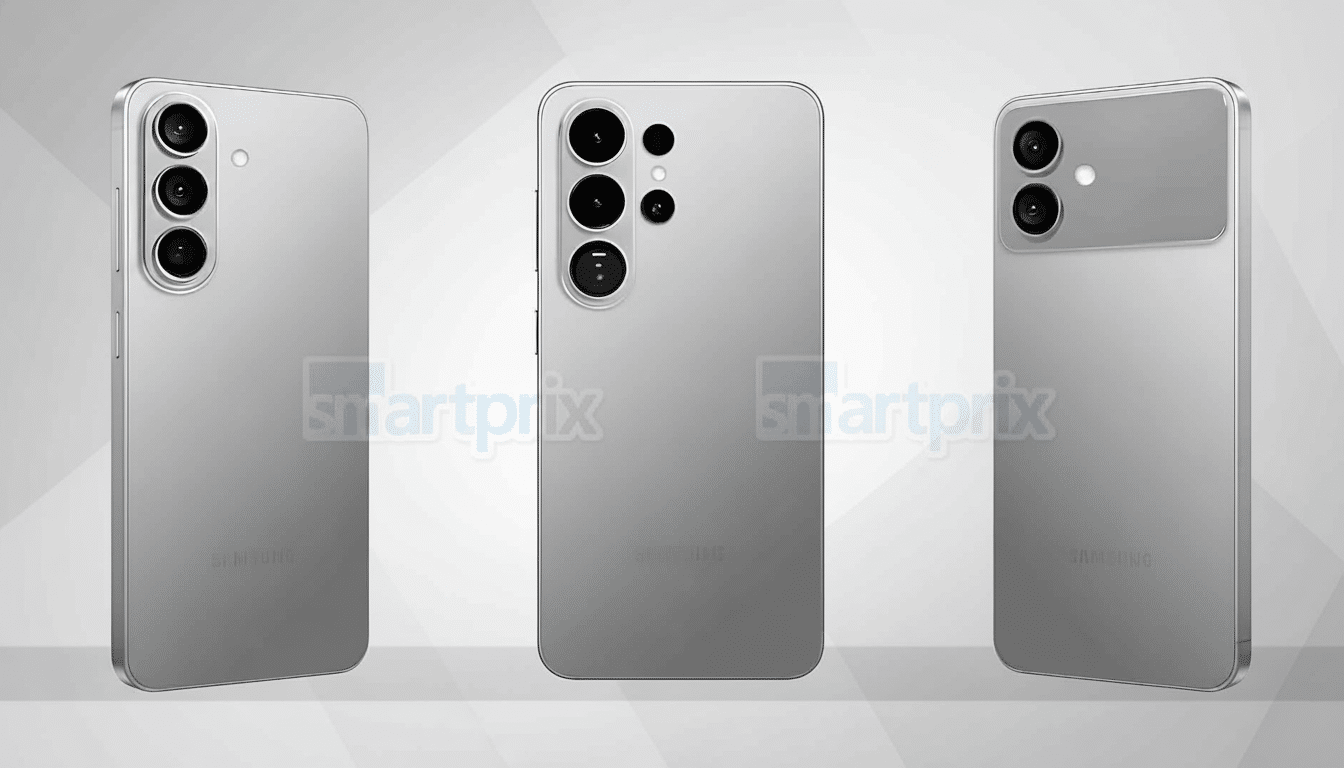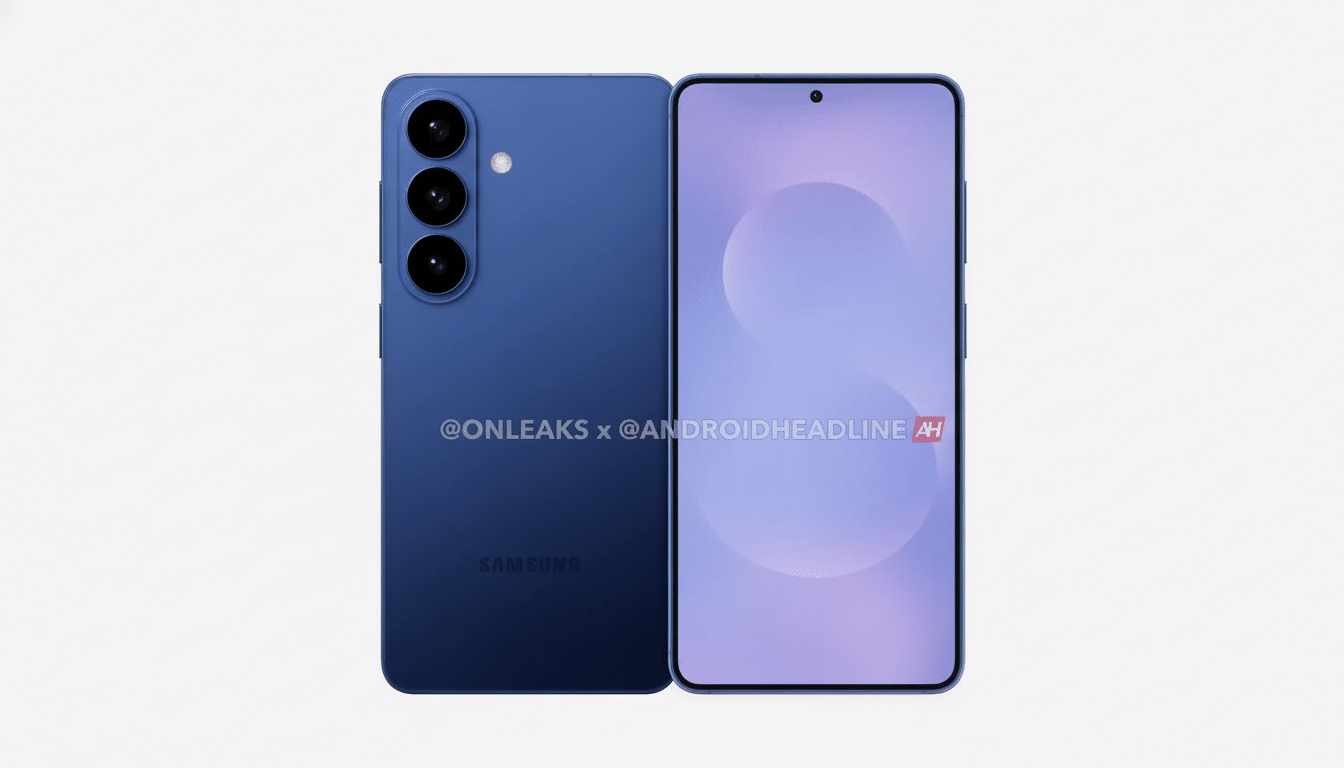For a hot minute there, the Galaxy S26 series seemed like an injection of adrenaline for Samsung’s flagship series. A real Pro model, a death-defyingly skinny Edge replacing an underwhelming Plus, and an Ultra which would actually earn its name — on paper, it all sounded like something of a course correction. Now, with leaks and supply-chain chatter piling up or just popping out at the last minute, that dream is dying quickly. Instead what’s emerging is a conservative, cautious middle of the road that seems carefully engineered not to surprise. It is a reasonable thing for you to feel annoyed.
The Pro Worth Buying Promise Appears Broken
The rumored Galaxy S26 Pro was to right the “base model blues” that have haunted Samsung’s tiniest flagship for years. That 4,300mAh battery is definitely a welcome bump up from the 4,000mAh that many buyers made do with, but the rest of the story isn’t shaping up to have much in terms of new twists. Multiple rumors also suggest Samsung’s own Exynos 2600 chipset will power the Pro rather than Qualcomm’s top-of-the-line Snapdragon, and that the camera hardware apes the S25 — that is, another go with the same 50MP main sensor lineage that goes back to the S22, along with familiar ultrawide and 3x telephoto.

So, the Exynos 2600 might finally be better than recent attempts. But the past is a stubborn teacher. Independent testing from outlets like AnandTech and PCMag over past years has seen Snapdragon variants win in sustained performance, GPU efficiency, and modem power draw every time. Perception matters too. Headline by headline, years of thermal throttling and regional chip lotteries have been training buyers to fear the Exynos brand regardless of what’s printed on spec sheets.
Worse, the Pro is rumored to be taller and wider — eliminating the compact charm that made the base S model so many enthusiasts’ go-to. If you’re sacrificing pocketability, it would stand to reason that we’d get huge camera enhancements or leapfrog charging speeds. And instead it’s quite a bit more battery, quite a bit more screen, and very much the same features — and not even the ones you want. This is anything but “Pro,” in any sense of the word people expected based on the device’s name.
Edge Ambition Out; Safe Plus Returns Instead
Perhaps most bumming of all is the fact that the Samsung Galaxy S26 Edge will be quietly ditched for another do-over of the Plus series. The Edge concept — thin, lightweight, and genuinely different — at least tried to have personality. Rumor has it that Samsung is seeing lukewarm sell-through of the new Edge model coming “soon,” and is making an about-face to a more traditional, safer Plus.
It makes sense, in a spreadsheet view. From a product identity perspective, it is a retreat. The Plus has typically just been a smaller Galaxy S in all but stature and, if it also follows suit with the same Exynos/unchanged-camera calculation that the Pro demonstrates, differentiation becomes scarce. When the competition is experimenting with various materials, charging systems, or camera stacks, reverting to being a predictable middle child won’t be how you win mindshare.
Ultra Leaves Enthusiasts Cold With Small Changes
Leaked renders suggest the S26 Ultra is due for a tasteful design refresh with rounded corners, an even flatter display, a streamlined camera island, and the S Pen making the cut.
That’s OK; fans want better than OK. The early whispers indicate hardly any change in battery and camera sensor, and even the chipset picture is not clear yet, with conflicting reports regarding Exynos versus Snapdragon. If the Ultra once again devolves into an S Pen slab with incremental improvements and nothing else, then that whole “top-tier” identifier is in danger of becoming more about how much money you spent than how good a phone it really is.

Consider the broader context. Premium buyers are also keeping their phones longer, with replacement cycles stretching to almost three years (as per Counterpoint Research). When customers upgrade less frequently, each cycle must bring a significant jump — better battery chemistry, improved imaging hardware, or pioneering connectivity — that justifies spending another four figures. Year-over-year polish isn’t enough.
Why This Should Annoy Buyers Paying Premium Prices
That’s not the allergy of consumers; it’s the allergy of being caught standing still at very premium prices. Deloitte and YouGov polls have consistently found that the biggest drivers of upgrades are, in order: better battery life, camera quality, and value — not some newfangled AI feature without a practical purpose. Meanwhile, elsewhere in the market, rivals are casualizing 100W-plus charging, one-inch-class or stacked CMOS imaging, and periscope zooms for sums beneath four figures. In that world, a refreshed skin with outdated camera silicon and a region-specific chipset feels tone-deaf.
There’s also the trust problem. The regional processor division has been a longstanding bone of contention among stalwarts who compare benchmarks and battery life endurance charts on Reddit and enthusiast forums. IDC and Canalys follow resale dynamics that demonstrate perceived performance differences can erode the value of secondhand devices. If Samsung doubles down on two different strategies without any visible progress in narrowing the gap, it continues with a two-tier experience under one brand.
What Might Save the S26 Line From Disappointment
It’s not too late to right the ship. A coherent chipset strategy — or evidence of parity in thermal performance, GPU longevity, and modem efficiency — would restore faith. It would also demonstrate that the company is capable of more than just software seasoning or tarting up existing cameras; on the Pro and Plus, a new main camera sensor would show that it still leads in imaging. A bigger silicon-carbon battery, or at least a bump in charging speed on this model over the Pro, would yield an everyday benefit I suspect most people could feel by lunchtime.
To Samsung’s credit, the breadth of its extended software support and on-device AI are real value adds. But software promises require hardware to fulfill them. The S26 family doesn’t have to win spec sheet bingo; it has to show intent. As of this moment, the message sounds like risk-averse normalization.
It’s not the leaks that are killing the Galaxy S26 Dream — it’s what you see inside of them.
If the vision is conservative chips, recycled cameras, and the safe return of the Plus, that’s a playbook for protecting margins — not buzzing excitement. If you don’t get more, it’s not just that you’re getting shafted; you’re living in a consumer relic of an immature market. Demand better. The only feedback loop that Samsung actually listens to is the sound of your wallet.

